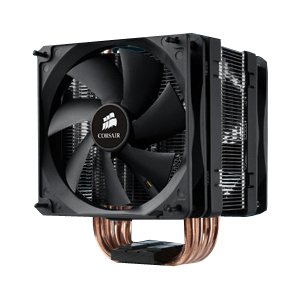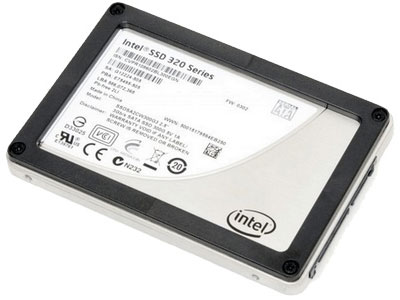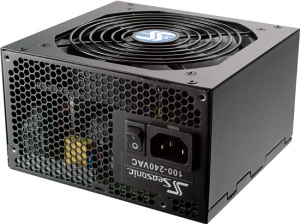Holiday 2011 Midrange System Buyer's Guide
by Zach Throckmorton on December 6, 2011 12:00 AM EST- Posted in
- Guides
- AMD
- Intel
- Sandy Bridge
- Llano
- Holiday 2011
- midrange
- NVIDIA
The King of Mainstream Processors
Intel's Core i7-2600K is actually not the king of mainstream processors—that honor is reserved for the more recently released Core i7-2700K. The only differences between the two chips are a 100MHz clockspeed advantage for the 2700K that carries a roughly $50 premium. That is, compared to the 2600K, the 2700K offers around 3% more performance at a cost increase of about 15%. Further, the 2700K does not reliably overclock substantially better than the 2600K. Thus, I consider spending the extra money on a 2700K unwise.
The Core i7-2600K's primary competitor is the Core i5-2500K. Compared the 2500K, the 2600K offers a slight clockspeed increase, and more importantly, Hyper-Threading. The 2600K is about $100 more expensive, so it's important to understand what applications and usage scenarios actually benefit from Hyper-Threading. You can see from Bench how the two CPUs compare. The short story is that if you use a lot of multi-threaded applications (like many photo and video editing titles), do a lot of file compression and decompression, or use specialized professional applications (3D Studio Max or CAD/CAM programs), then the 2600K is a wise investment. The average computer user, most gamers included, are really better off with the 2500K.
Rounding out the build

While the Core i7-2600K's stock cooler is sufficient for achieving respectable overclocks, for this build we're pairing the CPU with Corsair's A70. The A70 is a dual-fan heatpipe design that performs very well at an attractive after rebate price (and I've never had any issues with Corsair rebates). That said, there are many other similar CPU coolers that cost about $30, such as Cooler Master's popular Hyper 212 Plus that I've recommended previously.
Like the Biostar Z68 board this guide pairs with the Core i5-2500K, the ASUS P8Z68-V LE is also one of my go-to motherboards, for folks who want a few more bells and whistles than what the Biostar board offers. I've had good to great experiences with this board, especially in terms of its overclocking ability. Thus far these boards have been rock solid stable in the builds I've deployed with them. For a daily workhorse PC, reliability should be a primary consideration in choosing components.

Reliability is why we're going with an Intel 320 Series 120GB SSD for this PC. This SSD is neither particularly inexpensive nor particularly fast (though it will still put any HDD to shame). Instead, Intel's 5 year SSD warranty is the best in the market, and in my experience, Intel's SSDs are very reliable. (Yes, we know the 320 Series had some teething problems, but those appear corrected with the latest firmware.) We've bumped the capacity of the SSD up compared to the previous two builds so that more work-related applications can be installed on it, including disk space hogs like Adobe's CS5.5. While this build also includes the Samsung F3 1TB, it is important to consider whether you need a 7200RPM mainstream HDD or if instead you might be able to use a slower, less expensive "green" drive like Western Digital's WD10EARS.
Because some applications devour RAM, and because RAM is extremely inexpensive right now, we've bumped the DDR3 count from 8GB to 16GB—at the low cost of $60 total. While we're specifically recommending two kits of 8GB (2 x 4GB) G.SKILL Ripjaws X DDR3-1600 because of their current low price, RAM prices fluctuate frequently and wildly, so it's a good idea to comparison shop between different brands for the most attractive combination of price and speed.

SeaSonic is another component company with a well-deserved reputation for reliability. The S12II 430B is not cheap for a 430W PSU; however, it is very high quality, comes with a 5-year warranty, and is more than enough power for this system. It's also capable of supporting many upgrades, including a powerful discrete GPU if you become interested in GPU-accelerated computing (or gaming) down the road.
Finally, Fractal Design's Define R3 has the honor of housing all of these capable components. The Define R3 was recently reviewed by Dustin, and again I concur with his conclusions. I think this case is as good as it gets at the $100 price point, though there are other cases that perform similarly in terms of objective measures like temperature and noise. I simply find working with Fractal Design's cases in general to be a pleasure and really like their aesthetics.
| Component | Product | Price | Rebate |
| CPU | Intel Core i7-2600K | $320 | |
| CPU cooler | Corsair A70 | $45 | -$15 |
| Motherboard | ASUS P8Z68-V LE | $133 | |
| RAM | 16GB G.SKILL Ripjaws X DDR3 1600 (4 x 4GB, 2 kits) | $60 | |
| SSD | Intel 320 Series 120GB | $200 | |
| HDD | Samsung F3 1TB | $150 | |
| Power supply | SeaSonic S12II 430B | $75 | |
| Case | Fractal Design Define R3 | $100 | |
| Optical drive | LITE-ON iHAS-324-98B | $20 | |
| Operating system | Microsoft Windows 7 Home Premium 64-bit (OEM) | $100 | |
| Total: | $1203 | $1188 |
Summary
This Intel Core i7-2600K system rings up about 20% more expensive than the Core i5-2500K rig on the previous page. You lose the ability to game as this PC has no discrete video card (and the integrated Intel graphics are not gaming-level). Instead, you gain a larger SSD, increased overclocking capability, twice the RAM, and an extra four threads courtesy of Hyper-Threading. To be clear, the i5-2500K is likely a better fit for most computer users than this i7-2600K rig. However, this system can easily be turned into a gaming rig in the future, mitigating one of its drawbacks. And most importantly, certain more intensive applications like many video encoding titles will see more than a 20% improvement in performance for a 20% cost increase. If you can hang off buying a GPU for the time being, as we noted earlier the next generation AMD parts are due "real soon now" so you can grab one of those after the holidays.
We have a few more words of advice and general conclusions on the next page.










57 Comments
View All Comments
stefmalawi - Tuesday, December 6, 2011 - link
I was quite literally just looking for this article right now (having thought that it was already posted) when it popped up. Cheers!trifecta88 - Tuesday, December 6, 2011 - link
The flooding in Thailand and the tsunami in Japan have nearly tripled mechanical hard drive prices this year... to think that if you built this same build next year when factories recover you could put the extra ~100 (pre-flood 1TB price ~50) into GPU/monitor/etc or your wallet. If you are considering building a computer, you should probably dig up an old drive from another computer and use that until prices dip again.MonkeyPaw - Tuesday, December 6, 2011 - link
Yeah, I bought a WD 500GB drive 3 months ago for $49. Today, that exact same drive is $109. Reminds me of RAM prices back in 1995.Flunk - Tuesday, December 6, 2011 - link
Actually what you just described is the pricing from 2007, I bought 2 500GB 7200RPM drives back int he summer of 2007 for about $100 each.They didn't even have 500GB drives back in 1995.
kmmatney - Tuesday, December 6, 2011 - link
Comprehension failtwhittet - Tuesday, December 6, 2011 - link
Well his name is FlunkBSMonitor - Tuesday, December 6, 2011 - link
overpayedMathieu Bourgie - Tuesday, December 6, 2011 - link
Zach,Here are some things that I noticed while going through the builds. Simply trying to help here, so please don't take this the wrong way :)
I wanted to point out that the Llano system requires an extra SATA cable: The ASUS F1A75-M PRO/CSM motherboard includes two of them and the system will need three, for the DVD Burner, SSD and HDD.
Also, the Antecn NEO ECO 400C 400W PSU doesn't include a power cord.
Most of us will have spares cables/power cords, but it's still good to know this.
Speaking of the Llano system, I'm left unimpressed by it.
First of all, why limit yourself to a Micro-ATX motherboard when you could have gone full-size ATX instead? Now, if you decide to add a dedicated video card, you won't be able to add a dedicated PCI-Express sound card, since the PCI-Express 1x slot will be blocked by the most likely double-width video card.
The A8-3850 + ASUS F1A75-M PRO/CSM + 1866MHz 8GB G.Skill ends up costing $310
Here's a simple alternative build that will offer much superior gaming performance, as well as the possibility to upgrade the CPU to higher-end Sandy Bridge offerings for a similar price:
$130 Core i3-2120,
$75 motherboard: ASRock H61M/U3S3 with USB 3.0, SATA 6.0Gbps
$80 (less with a MIR) Radeon HD 6670
$35 8GB DDR3 1333MHz Gskill
Total: $320
All of which are compatible with the rest of your suggested build.
Power consumption? The Core i3-2100 draws about 17W less at load than the A8-3850 according to the Bench, for CPU load only and the Radeon HD 6670 has a 66W TDP according to Ryan's review on AnandTech. So roughly 50W more if you don't consider the power draw of the GPU within the A8-3850 during gaming and assume that the 6670 pulls 66W, which is unlikely. The Antec ECO NEO 400W will have no problem handling that.
Sure, the A8-3850 will come ahead in a few multi-threaded programs, but it's not like the 3.3GHz dual-core + Hyper-Threading Core i3-2120 will be far behind, while the i3-2120 and Radeon HD 6670 will trounce the A8-3850 when it comes to gaming performance. The Core i3-2120 will also come far ahead with any program that is mostly single-threaded.
Decide to get a more potent video card with either system and the Core i3-2120 system will still come ahead, due to its superior gaming performance when matched with a dedicated video card.
Best of all? You can upgrade the Core i3-2120 system to a Core i5-2xxx or i7-2xxx down the road if you want to.
SSD wise, you could also consider a Samsung 830 series 64GB, which costs $10 less, offers similar if not even better performance and reliability.
Moving on to the $1000 Intel Core i5-2500K System:
You can pick up a Radeon HD 6870 for only $10: http://www.newegg.com/Product/Product.aspx?Item=N8...
For the A8-3850 system, you recommend the Crucial M4 64GB, because it is very reliable, but then go on to recommend an OCZ Vertex 3 SSD, one of the worst SSD when it comes to reliability, for the $1000 System? What the? Better stick with a Crucial M4 or a Samsung 830 series SSD for performance and reliability here.
You mention adding a second 6850 for Crossfire. However, the recommend Biostar TZ68A+ motherboard second 16x PCI-Express slot is limited to 4x.
Other than that, your recommendations are sound. Thanks for the article and your hard work on it.
For the $1200 build, just want to point out that the Corsair A70 CPU Cooler is a whole lot cheaper at Amazon.
Also, I'd personally go with a Crucial M4 128GB instead of the Intel 320 series. Crucial M4 SSDs offer great reliability and performance is way higher than the 320 series.
"AMD's HD 7000 series should come out in the not-too-distant future, but we can't share any details" - Looking forward to that ;)
My 2 cents,
Mathieu
aznofazns - Tuesday, December 6, 2011 - link
100% agree with the alternatives you listed. Llano A8 is ill-suited to midrange systems housed in midtower cases. It's a better solution if you're looking to build a mATX or mini ITX PC in which conserving space is more important and performance is less important.The i3-2120 will give the A8-3850 an ass-whoopin in the majority of tasks. Media creation still favors the quad-core A8, but not by a lot. See here: http://www.anandtech.com/show/4476/amd-a83850-revi...
Entry level HD6670 will also destroy the GPU on the A8, but it doesn't end there. Since the HD6670 has its own DDR3 (or even quad-pumped GDDR5) VRAM, you won't need to spend an extra ~$30 on the faster 1866MHz DDR3 RAM to improve graphics performance. Your average DDR3 1333 will provide plenty of bandwidth to the i3.
bji - Tuesday, December 6, 2011 - link
I think "ass-whoopin" is very overstated. It is true that the i3 is 20% - 30% faster in about 75% of Anand's benchmarks, the majority of which are single threaded or (likely) optimized specifically for Intel processors. The A8 comes out ahead on many of the multithreaded benchmarks (although by a much smaller margin than it loses by on the others).I don't consider this an "ass-whoopin". That would be considerably faster (50% or more) on all benchmarks. The i3 isn't even close to that.
I have found that 20% to 30% better performance on single threaded tasks is typically not even noticeable. I have also found that for my most important workloads (parallel software compiles) more cores is the most important factor, and I believe that the most demanding applications are heavily multithreaded which makes the i3's advantage in single threaded apps less significant.
One place where the i3 clearly shines over the A8 is gaming performance (assuming that both systems are using dedicated cards, which really isn't fair to the A8 since its integrated graphics are so good), but seriously, who even cares about gaming performance of PCs anymore? There is a reason that graphics card development has slowed: consoles drive the technical requirements of games, so better gaming performance of a PC is, for most people, completely irrelevant.
I don't want to say that the A8 is a better chip than the i3, but I don't want to hear overblown conclusions about the i3 giving the A8 an "ass-whoppin" either. The A8 for many users can be a better chip, and for others the i3 can be better. It depends on workload and for most casual users, the differences would never be noticed anyway.